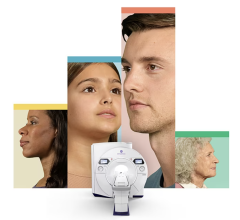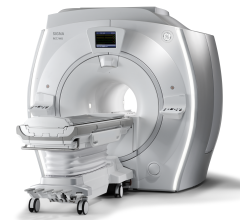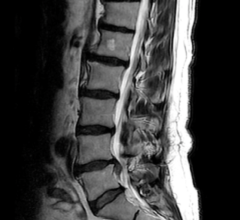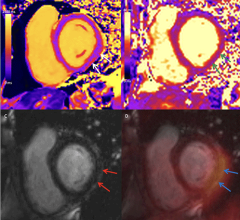
October 30, 2009 - As leader of the European Union funded HYPERImage research project, Royal Philips Electronics said in the project to create a hybrid PET/MR system the team has developed new gamma-ray detectors designed to be compatible with the strong static and dynamic magnetic fields present in a combined PET/MR scanner, and has achieved major progress with respect to MRI-based static and dynamic PET attenuation correction. This new technique is based on the simultaneous acquisition of time-of-flight Positron Emission Tomography (PET) and Magnetic Resonance (MR) images. The project involves eight partners from six European countries and has a total budget of around EUR 7 million. The ultimate goals of the project are to advance the accuracy of diagnostic imaging in cardiology and oncology and open up new fields in therapy planning, guidance and response monitoring. A hybrid PET/MR scanner could simultaneously deliver the anatomical and functional information achievable using state-of-the-art MR scanners to show soft tissue contrast and physiological processes in blood vessels, and the molecular imaging information provided by PET. As a result, it would combine the best of both worlds, which could ultimately help to pinpoint and characterize disease sites within the body more accurately than is currently possible. For a hybrid scanner that offers simultaneous PET and MR image acquisition, two fundamental problems need to be solved: the development of MR-compatible PET detectors and a method of accounting for PET attenuation. The milestone that the HYPERImage team has reached is the development of a functional gamma-ray detector that meets the performance requirements of the latest time-of-flight PET scanners. The new gamma-ray detectors have been designed to be compatible with the strong static and dynamic magnetic fields that would be present in a combined PET/MR scanner. Furthermore, the team has achieved major progress with respect to MRI-based static and dynamic PET attenuation correction. Details of these results are presented at the IEEE Nuclear Science Symposium and Medical Imaging Conference , which takes place on October 25-31 in Orlando, Florida. “Understanding the molecular mechanisms associated with cardiovascular disease and cancer, and the development of technologies focused on the early detection of these disease processes are the two main challenges of biomedical research,” said Prof. Dr. Valentin Fuster, Director of the National Center for Cardiovascular Research in Madrid (one of Europe’s leading research centers in cardiology) and the Cardiovascular Institute at the Mount Sinai Medical Center in New York. “I am convinced that the realization of a PET/MR technology platform will significantly help to improve the precision and the moment at which disease is diagnosed, two critical parameters for the successful treatment of many diseases." “The HYPERImage team’s combined expertise in semiconductor physics, signal processing and medical scanner design, together with its expert clinical knowledge, have moved the project an important step forward in the development of a new imaging tool that is intended to help clinicians diagnose and treat some of the world’s most prevalent killer diseases, such as breast cancer,” says Henk van Houten, senior vice president of Philips Research and head of Philips’ healthcare research program. “I am proud to say that proof-of-concept of an MR-compatible PET detector took the team less than 1.5 years to achieve. It clearly demonstrates that good collaborations lead to very fast progress.” The HYPERImage consortium comprises three universities (King's College London, UK; Universität Heidelberg, Germany; and Universiteit Ghent - Institute for Broadband Technology, Belgium), three research foundations (Fundación Centro Nacional de Investigaciones Cardiovasculares, Spain; Fondazione Bruno Kessler, Italy; and The Netherlands Cancer Institute, The Netherlands), a university medical center (Uniklinikum Hamburg-Eppendorf, Germany) and the industrial partner (Philips, The Netherlands and Germany). EU funding for the HYPERImage project, which is being provided as part of the EU’s 7th Framework Program, amounts to around EUR 5 million. The consortium partners will provide an additional EUR 2.3 million. The project started in 2008 and will run for three years. Philips’ leadership of the consortium is based on its experience in designing and developing medical scanners. For more information: www.medical.philips.com


 July 31, 2024
July 31, 2024 








